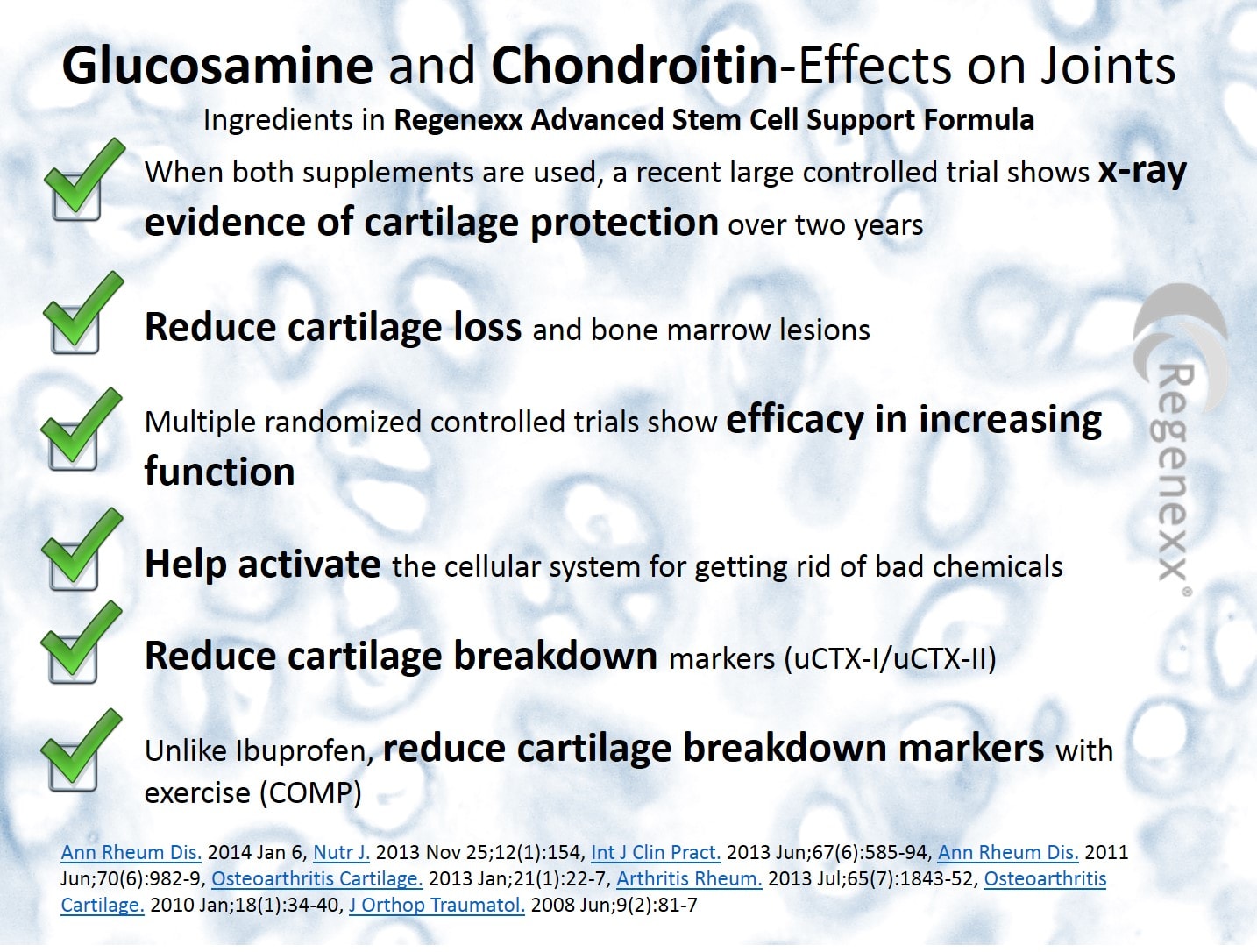Arthritis Knee Supplements: Updated Research on Glucosamine and Chondroitin
As arthritis knee supplements, Glucosamine and Chondroitin are old mainstays. There’s more clinical research on these two arthritis supplements than on any other joint health focused ingredient. What does the research say? On the good side, studies that focus on increasing function and sensitive objective measures of cartilage loss generally show that they work well. However, studies that focus on pain relief similar to sledgehammer drugs like Ibuprofen can often find no significant effects. The reason is that while other supplements like Curcumin have clinical trials supporting that they have Ibuprofen’s kick for pain relief, Glucosamine and Chondroitin seem to be disease modifying agents-i.e. their focus is to preserve the cartilage you have. While that can sometimes translate into reduced pain (i.e. if your pain was getting progressively worse due to cartilage loss), that isn’t always the case.
There have been a bevy of studies that show that these two help MRI cartilage findings when taken over many months to years. For example, I blogged on a study a few years ago that showed that Chondroitin helped to reduce cartilage loss on MRI. There are other studies for both Glucosamine and Chondroitin that show this, especially when they’re taken for long periods of time (i.e. more than a year). Now a new study just published in January of this year shows again that when both are taken together over two years, they slow the progression of arthritis as seen on x-rays. The study looked at more than 600 middle aged and elderly patients who still had a small amount of cartilage (>2 mm joint space width) and who were randomized to take either supplement alone, the two together, or a placebo. Only the two supplements taken together showed protection of cartilage over the two year period. Interestingly, like some studies out there, none of the supplement combinations reduced pain more than placebo. As discussed above, this isn’t too surprising, as if you’re looking for a supplement to get rid of arthritis pain like a Motrin pill, there are much better choices.
What’s interesting about our stem cell supplement experience, is that while we picked ingredients not only based on the amount of clinical research showing benefit, we also used our lab data showing beneficial effects on human stem cells in the lab. This allowed us to make sure each ingredient had two independent benefits-its well known property and it’s ability to help stem cells in culture. We also did some really interesting things like breaking the Glucosamine into its two studied forms (sulfate and HCL) to improve its tolerability. For example, I’ve never routinely taken Glucosamine and Chondroitin in pill form as it made my stomach feel horrible. However, with the liquid form and the Glucosamine broken down into its two parts, I have no issues with taking my Regenexx supplement every morning.
The upshot? Supplement based pain relief for arthritis patients often means combining many ingredients. Obviously, cartilage protection and stem cell health are major issues. So including Glucosamine and Chondroitin in forms you can tolerate are important. Having said that, most patients who routinely take NSAID drugs like Motrin expect the immediate effect that their joints feel better when taking a supplement. To get that, other components like Curcumin are needed. In the end, I expect some patients stop taking their Glucosamine and/or Chondroitin because they don’t notice that immediate pain relief. Regrettably, based on the published research showing cartilage protection over the long-run with these supplements, that’s likely a mistake.
These statements have not been evaluated by the FDA. This product is not intended to diagnose, treat, cure, or prevent any disease.

NOTE: This blog post provides general information to help the reader better understand regenerative medicine, musculoskeletal health, and related subjects. All content provided in this blog, website, or any linked materials, including text, graphics, images, patient profiles, outcomes, and information, are not intended and should not be considered or used as a substitute for medical advice, diagnosis, or treatment. Please always consult with a professional and certified healthcare provider to discuss if a treatment is right for you.

